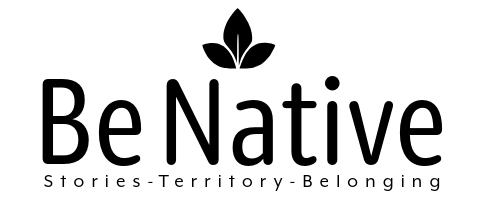How to Spot Environmental Issues:
To support young explorers in identifying and understanding environmental issues, I created a simplified visual guide. This short infographic is designed to spark curiosity and encourage the use of all five senses while observing the world around them. It also emphasizes the importance of collaboration—inviting others to join the investigation and share their perspectives can lead to deeper insight and creative solutions. Whether used individually or as a group, the guide serves as a playful and practical tool to help youth become more aware of the territory they inhabit.
Okay, imagine you're a detective or a spy trying to figure out a really big puzzle – like why your favorite swimming spot is suddenly full of algae, or why some animals are disappearing from your local park. To solve these big environmental puzzles, you can't just look at one clue. You need to look at things from all angles, like a super-detective!
Here's how we can explore environmental issues from lots of different angles, like a team of super-detectives:
1. The "Mixing It Up" Approach (Mixed Methods Research)
This is like using different detective tools together to get the clearest picture.
Using Numbers (Quantitative Methods):
Surveys: Imagine asking hundreds of students in your school how often they recycle or if they worry about climate change. You'd get lots of numbers to show patterns.
Counting & Measuring: This is like counting how many plastic bottles are in a local stream each week, or measuring how much the temperature has changed over 50 years.
Maps & Satellites (GIS & Remote Sensing): Think of using Google Earth to see how a forest has shrunk over time, or where pollution seems to be strongest. It's like having a bird's-eye view!
Experiments: This could be setting up a small test to see if a certain type of plant grows better with different amounts of water, just like a science fair project.
Using Stories & Opinions (Qualitative Methods):
Interviews: This is like having deep conversations with people. You might talk to a fisherman about how the fish have changed over the years, or a farmer about how the weather affects their crops. You hear their personal stories and feelings.
Focus Groups: Imagine getting a small group of friends together to talk about why they think litter is a problem in your town. Everyone shares their ideas.
Case Studies: This is like doing a deep dive into one specific situation, like why one particular town successfully cleaned up its river, learning all the details.
Watching & Listening (Ethnography): This is when a researcher spends a lot of time with a group of people (like a community living near a factory) to understand their daily lives and how the environment affects them.
Looking at Messages (Content Analysis): This is like studying news articles, social media posts, or even old government reports to see how people have talked about an environmental issue over time.
2. The "Team Up with the Community" Approach (Participatory Research)
This is super important! It means inviting the people who are actually affected by the environmental problem to help you solve it.
Community-Based Research: Imagine if your town is worried about polluted water. Instead of just scientists telling them what to do, the townspeople work with the scientists to collect water samples, decide what questions to ask, and figure out solutions. It's like a joint mission!
Citizen Science: This is when everyday people help scientists gather data. Think about apps where you can report sightings of certain birds, or help monitor air quality in your neighborhood. You're helping science happen!
3. The "Big Picture, All Together" Approach (Transdisciplinary Research)
This is like getting all the smartest people in different areas (scientists, community leaders, even artists!) together to solve a problem.
Shared Knowledge: Everyone brings their unique knowledge – from science facts to local traditions and experiences – to work together on finding solutions.
Working with Stakeholders: "Stakeholders" are all the different groups of people who care about or are affected by the issue – like local businesses, government officials, and environmental groups. This approach makes sure everyone's voice is heard.
Planning for the Future: This involves imagining different possible futures for the environment and then figuring out what we need to do today to get to a better future.
4. The "Looking Back in Time" Approach (Historical Research)
To understand why something is happening now, sometimes you need to look at what happened before.
Old Records & Documents: This is like looking through old newspapers, photos, or government reports to see how the environment has changed over many years.
Hearing Old Stories (Oral Histories): Talking to grandparents or elders in a community can give you amazing insights into how the environment was in the past and how it has changed during their lifetime.
5. The "Hands-On with Nature" Approach (Ecological & Biophysical Methods)
This is where real scientists get out into nature to measure and study the environment itself.
Environmental Monitoring: This is like constantly checking the temperature of a lake, the amount of oxygen in the water, or how many different types of plants are growing in a forest.
Ecosystem Models: Scientists use computers to create "digital versions" of ecosystems to see how they might react to different changes, like pollution or warmer temperatures.
By using a mix of these "detective tools," we can get a much richer and more complete understanding of environmental issues, and then work towards better solutions. It's all about looking at the puzzle from every possible angle!
References:
Environmental Protection Agency (EPA). (n.d.). Participatory Science for Environmental Protection. Retrieved from https://www.epa.gov/participatory-science
Insights Opinion. (n.d.). What is the Importance of Quantitative Research in the Environment? Retrieved from https://insightsopinion.com/quantitative-research/importance-of-quantitative-research-in-the-environment
Number Analytics. (n.d.). Transdisciplinary Research in Population and Environment. Retrieved from https://www.numberanalytics.com/blog/transdisciplinary-research-population-environment
ResearchGate. (n.d.). (PDF) Qualitative research for environmental sciences: A review. Retrieved from https://www.researchgate.net/publication/286002729_Qualitative_research_for_environmental_sciences_A_review
SESYNC. (n.d.). Qualitative Data for Sustainability Problems: An Example Integrating Textual Data. Retrieved from https://www.sesync.org/resources/qualitative-data-sustainability-problems-example-integrating-textual-data
